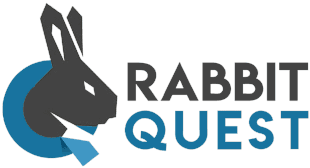How do you make new employees feel directly involved in your vitality initiative? 🤝
As an HR manager, you know how important it is to show new employees from their first day at work that their well-being is taken seriously. It is often a hectic time for them: new systems, colleagues, and expectations to understand. Precisely in that hustle and bustle lies an opportunity to involve them in your organisation's vitality initiative. Because if employees know from the start that attention is being paid to their physical and mental health, they will be more likely to take an active part and reap long-term benefits. But how exactly do you go about this?
Time to read: 5 minutes
Give vitality the starring role in the onboarding show! 🎬
The onboarding of new employees is the perfect time to introduce them to the vitality initiative. Often it is an abundance of information and impressions, but precisely by also focusing on vitality at this time, you make them feel welcome. For example, consider introducing them directly to a wellness package, such as an e-mail or personal folder that contains all the information about the vitality initiative. Show how they can participate and why it is important. Such a folder could, for example, include an overview of all the activities that fall within the vitality programme, from sporting challenges to mindfulness training.
It can also help to organise a personalised tour in which vitality plays a central role. Imagine showing a newcomer not only the standard stuff, but also the spaces for wellbeing, such as a quiet place for yoga or an area for lunch walks. That way, you make vitality tangible from day one and new employees immediately feel invited to join in.
You can make this even more powerful by organising a personal well-being conversation from day one. In this conversation, as an HR manager, you can ask about the new employee's personal goals and wishes in terms of health and well-being. This creates a direct connection between the employee and the vitality initiative and shows that, as an organisation, you take their wellbeing seriously. You can discuss together how they can achieve their goals within the programme, and this conversation immediately forms a bridge to future participation. Thus, vitality becomes not just a theoretical concept, but a personal journey that starts immediately.
The VIP tour for Newcomers✨
In the first weeks of a new job, everything is new and exciting, but this is also the time when habits are formed. Why not link this directly to your vitality initiative? An effective way is to schedule a mandatory moment during onboarding when the employee is introduced to the vitality programme, for example by participating in an activity in the first week. This can be as simple as a joint lunch walk or a short workshop on healthy habits.
You can also assign a mentor who plays an active role within the vitality initiative. This mentor can provide explanations, answer questions and take the new team member through activities. By assigning someone who is himself enthusiastically involved in the programme, you increase the chances that the new employee will also participate more quickly and for longer. Indeed, this social factor, the feeling of belonging, plays an important role in the success of vitality programmes.
Another option is to immediately introduce a vitality challenge specifically tailored to new employees. This could, for example, be a challenge where they have to reach a certain number of steps in the first month or take part in three vitality activities. By offering a playful yet targeted start, the vitality initiative becomes something that is not only fun, but also immediately measurable and motivating. Moreover, you immediately create a moment of satisfaction when they reach this first milestone, encouraging them to keep going.
A lasting routine is half the battle 🚀
The challenge for many vitality programmes is not starting them, but rather maintaining engagement. New employees are often open to anything an organisation offers them, but without a routine, enthusiasm can quickly wane. That is why it is important to make the vitality initiative a regular part of their working week. For example, you can send a weekly reminder, inviting them to a short vitality activity, such as a mindfulness session or a sports moment. This helps them stay structurally engaged and make the vitality initiative a natural part of their working day.
Also consider a ‘vitality check-in’ as a fixed part of the monthly evaluation interviews in the first few months. In it, you ask, for instance, how the new employee experiences the balance between work and health, and whether they actively participate in the vitality programme. This way, you show that you value their well-being and keep the subject alive within the organisation.
To reinforce this routine, you can also introduce a buddy system where new employees are paired with a colleague who is already actively participating in the vitality initiative. This buddy can help them find their place within the programme and invite them to join activities. A buddy provides an approachable way to participate, and the personal contact makes it easier to get into a routine. This not only creates a healthy habit, but also a stronger connection within the team, which increases overall engagement.
‘You can only make a first impression once’
Onboarding is a unique opportunity to get employees directly involved in the vitality initiative. By incorporating vitality in the first few weeks, you create a culture where health and well-being are central. It ensures a strong start that not only benefits the employee's well-being, but also contributes to a healthy, productive organisation.
Make vitality a regular part of your onboarding through wellbeing packages, social engagement and recurring activities. That way, you will ensure that from day one, your employees not only know what the vitality initiative entails, but also want to actively participate in it. A small investment in the first weeks, with a big impact in the long run.
A final step to make a lasting impact is to organise a closing vitality meeting after the first month. This can be an informal meeting where you ask new employees about their experiences with the vitality programme and any areas for improvement. By facilitating this conversation, you show that their input is valuable and that vitality remains a living, dynamic topic. It also gives you the chance to identify and address any obstacles at an early stage, so employees can move forward with even stronger commitment.




